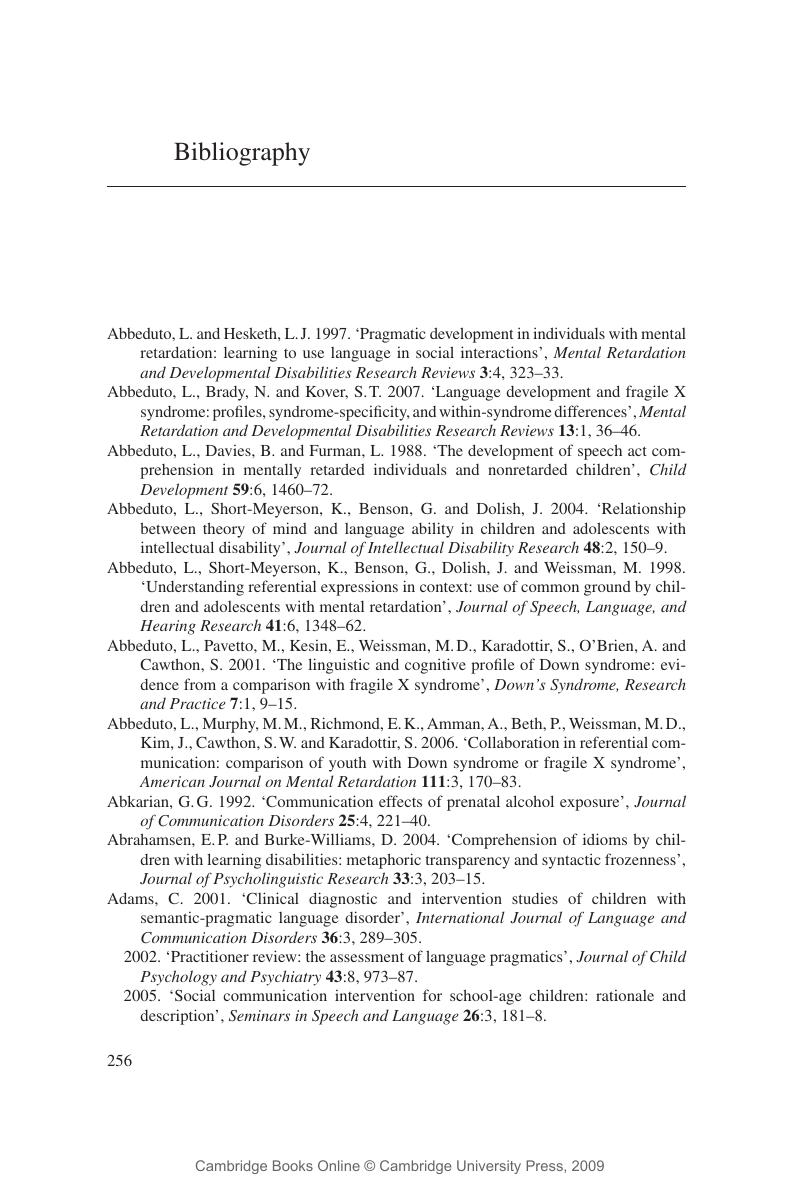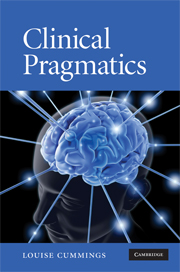Book contents
- Frontmatter
- Contents
- Preface
- Acknowledgements
- 1 Clinical pragmatics: theory and practice
- 2 A survey of developmental pragmatic disorders
- 3 A survey of acquired pragmatic disorders
- 4 The contribution of pragmatics to cognitive theories of autism
- 5 The cognitive substrates of acquired pragmatic disorders
- 6 The assessment and treatment of pragmatic disorders
- 7 A critical evaluation of pragmatic assessment and treatment techniques
- Bibliography
- Index
- References
Bibliography
Published online by Cambridge University Press: 27 July 2009
- Frontmatter
- Contents
- Preface
- Acknowledgements
- 1 Clinical pragmatics: theory and practice
- 2 A survey of developmental pragmatic disorders
- 3 A survey of acquired pragmatic disorders
- 4 The contribution of pragmatics to cognitive theories of autism
- 5 The cognitive substrates of acquired pragmatic disorders
- 6 The assessment and treatment of pragmatic disorders
- 7 A critical evaluation of pragmatic assessment and treatment techniques
- Bibliography
- Index
- References
Summary

- Type
- Chapter
- Information
- Clinical Pragmatics , pp. 256 - 298Publisher: Cambridge University PressPrint publication year: 2009
References
- 1
- Cited by



